
Shoebill
Shoebill
Shoebill
Shoebill is famous as a "bird that does not move". It is characterized by a large beak and crisp sharp eyes. His personality is rough, but he also has a cute side that is spoiled by the keepers. Because of the gap between its appearance and its appearance, some people become captivated by shoebills. Let's explore in detail together so that more people can know the charm of shoebill!
Shoebill Basic Infomation
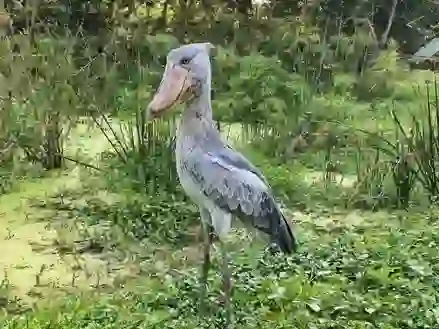
Pelecaniformes-Balaenicipitidae-Shoebill genus.
Length:approx 110~140cm weight:approx 4~7kg wing length:approx2m.
Shoebill lives from the central to eastern parts of the African continent. Prefers to live in steppes near wetlands with plants such as palpis.
Shoebills basically prefer solitary behavior.
If you put the shoebills that are actually bred in the same room, they will keep a certain distance from each other. From their behavior, you can see that they do not approach other animals and are willing to be alone. Even though it is an animal that prefers to be alone, does it affect reproduction?
Shoebills can only cooperate when raising their young. I feel that relatively common in raising animals is that males often do not participate in child-rearing and raise only females. However, shoebills protect their eggs while the male and female take turns in the nest. Males are also cooperative animals in raising their young.
1~3 eggs are laid in one laying, and they hatch from the eggs about 1 month later. The parent bird doesn't just guard it until it hatches. The temperature in Africa is quite high, so I also draw water from the beak to cool the eggs so that they do not get too hot.
You can feel that they are trying to raise their children with care. However, raising shoebill cubs is notoriously cruel. What exactly is cruel parenting?
In fact, even if a shoebill gives birth to two, it will only raise one that was born first. Even when feeding, priority is given to the first born child. The second and subsequent children can only be taken care of to such an extent that they do not die. Why don't we kill a child born later right away?
The reason is that for the parent bird, the second and subsequent cubs are "insurance". In some cases, the first child may not grow up safely, such as the death of the first child. At such times, I start raising my second child instead. If you kill them immediately, there will be no substitute for them in the event of an emergency, so they will be raised to the extent that they will not die. Then, when the first child can grow up safely, he begins to bully the weakened sibling. The parent bird turns a blind eye and feeds only the first cub. It's hard to be raised while being discriminated against even though we are brothers. You can understand that shoebill parenting is said to be cruel.
By the way, the shoebill is a difficult bird to breed artificially. Breeding timing is difficult to determine, and if the timing is missed, the birds may fight and injure each other.
Not only Japanese zoos but also overseas zoos that keep shoebills are trying to breed them. However, only two cases have been successful so far. It may be difficult to create a good pair because shoebills prefer to be solitary and there is still much unknown about their breeding.
Shoebill Q&A

What is the origin of the shoebill name?
In English, it is called "shoebill", but in fact, in the case of the Japanese name, it is named "hashibirokou". Why is it called hashibirokou in Japanese? Why is it called "shoebill" in English? In this article, we will introduce the origins of these two.
First of all, the reason why it is called hashibirokou in Japanese is related to the origin of the characteristic beak and silhouette of the head. It is believed that the name is taken from the words "stork with a wide beak".
※The beak is called "kutibashi" in Japanese, and the stork is called "kounotori".
And the English name shoebill was given from the meaning of "beak like a shoe". By the way, the scientific name balaeniceps rex means "king like a whale's head." Certainly, if you look closely at the silhouette of the profile of the shoebill, it resembles a long and thin object such as a shoe or a whale.
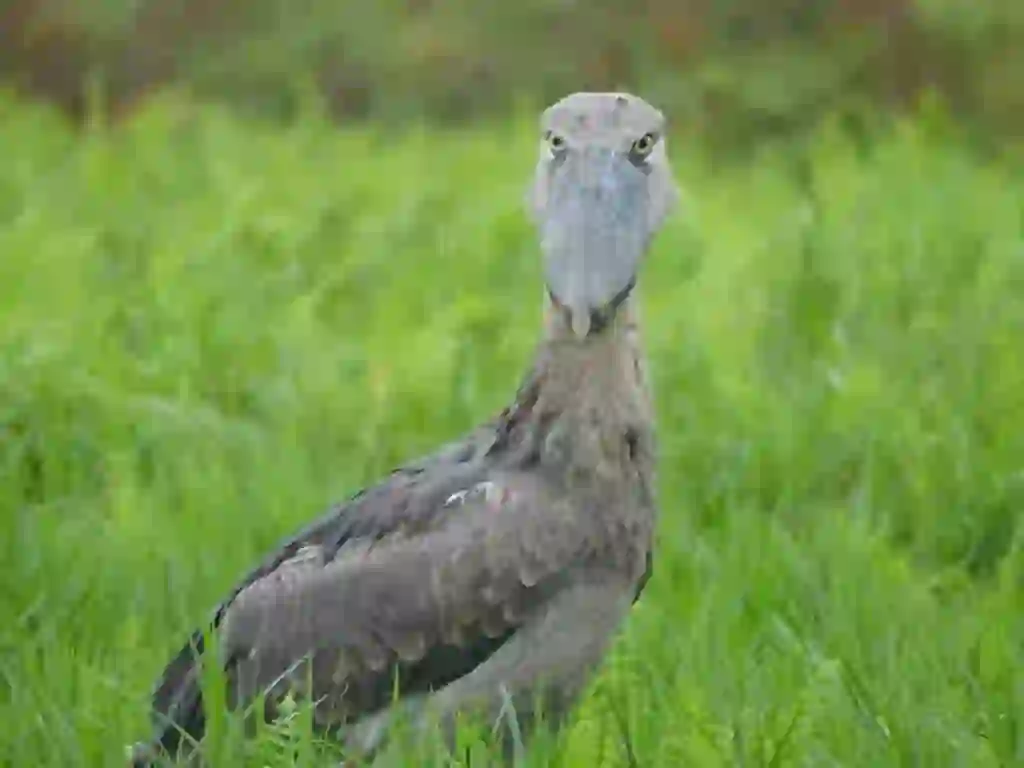
Why do shoebills live there?
The reason why we live near wetlands is that there are fish to feed on. Shoebills have a habit of staying in their favorite places, so they will not move unless they are in a troubled state, such as not being able to get food.
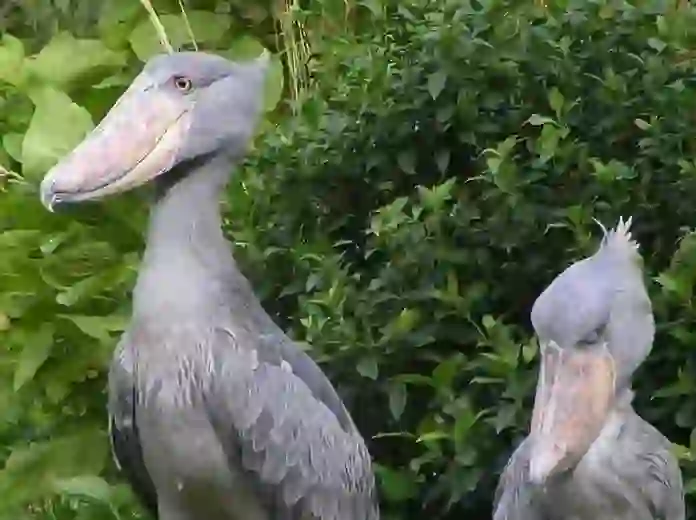
What does shoebill eat?
The shoebill’s main food is fish. They prefer ancient fish such as lungfishs and bichirs.They can also eat frogs, snakes, and small mammals.
Shoebills in captivity are fed carp, freshwater minnow, and horse mackerel. They are large birds, so they eat large fish.

Why doesn't the shoebill move?
The shoebill is famous for being a “non-moving bird,” but why doesn’t it move? The reason is to catch fish, which is their food.
Lungfishs, their main food, come to the surface of the water to breathe. Shoebills wait motionless to catch them at the right time. They have a very persistent personality.

What is the lifespan of a shoebill?
Shoebill lives for about 30~40 years. This lifespan can be said to be the longest-lived species among the many birds that exist.
There was a shoebill in Japan that set the world record for the oldest shoebill ever kept in captivity. That shoebill was named “Bill” and was kept at the “Izu Shaboten Zoo.”
Bill was the first shoebill to be exhibited in Japan when it arrived in 1973. Bill passed away on August 6, 2020, and was estimated to be over 50 years old. It lived longer than the average lifespan by 10 years, probably because it had a good environment and was well taken care of.
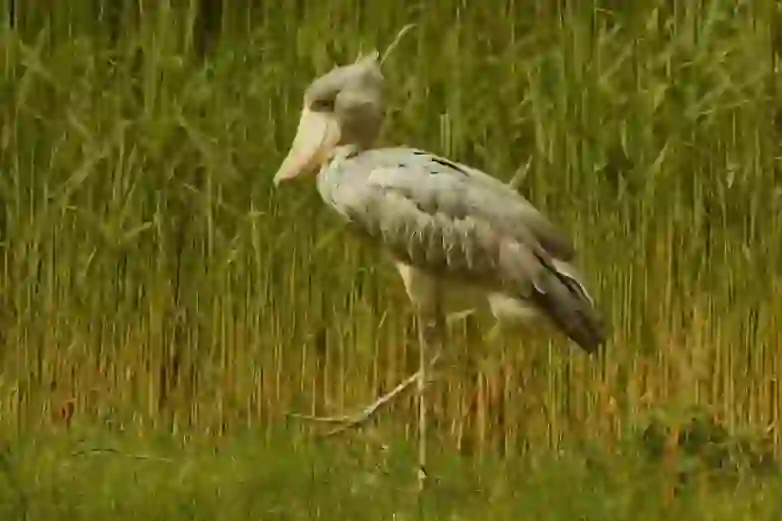
Can shoebills chirp?
The shoebill rarely makes noise, so much so that it can be called rare. Even if they can make noise, the volume is not very loud. The reason for this is that the function for making noise has degenerated.
Instead of making noise, they use a method called “clattering” when they want to communicate. Clattering is a method of opening and closing their beaks to make a rattling sound.
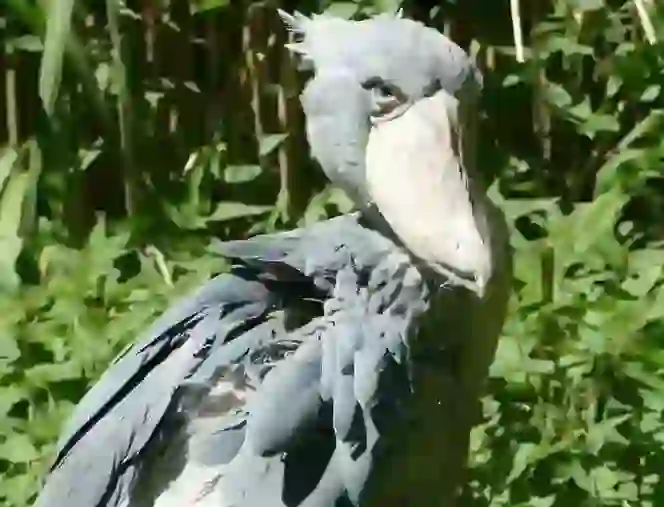
Why do shoebills bow their heads and bow?
The shoebill bows to show their affection for courtship or friendship. Some shoebills like their keepers and bow.
In fact, the shoebills at the Kakegawa Kachoen in Shizuoka Prefecture, Japan love their keepers. You can see them bowing and being affectionate by letting their keepers pet them. They have a cute side to them, even though they have a sharp appearance.

Can shoebills fly?
The shoebill can fly, but it cannot fly long distances. It may be difficult for them to fly continuously because they are large birds. They can fly about 100-500 meters.
When the shoebill flies, it flaps its wings about 150 times per minute. This number is small compared to other birds. Shoebills do not fly frequently. They use flying as a means of transportation to change their feeding location, so you rarely see them flying.
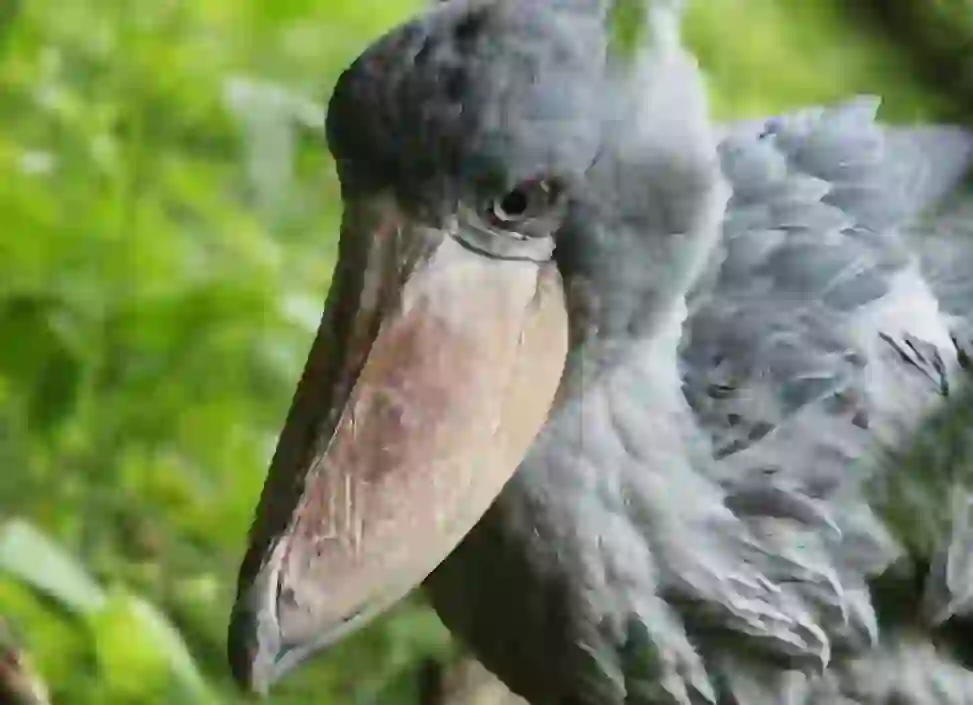
Is it true that shoebills suddenly have white eyes?
It's true.
When observing the shoebill, it may suddenly turn its eyes white. It can be surprising when it suddenly turns white.
The white part is not the eyeball moving, but a thin membrane called the “nictitating membrane” covering the eye. This nictitating membrane is also called the “third eyelid.” Its function is to protect the eye from water and dust. In fact, humans used to have this function, but it has degenerated.
Also, what I want you to pay attention to in the shoebill’s eyes is their color. This is because the color of their eyes changes with age. In the case of young shoebills, their eyes are “yellow.” As they grow into adults, their eye color changes to “blue.” It’s easy to tell how old a shoebill is by looking at their eyes.
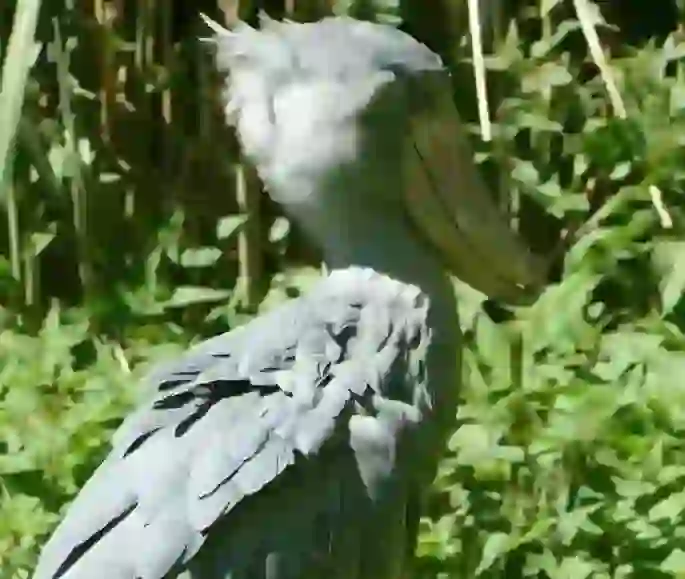
Is there a place in Japan where I can see shoebill?
There are seven zoos where you can see shoebills in Japan.
【Tokyo】 ・Tokyo Onshi Ueno Zoo (4 birds) 【Chiba】 ・Chiba City Zoological Park (2 birds) 【Tochigi】 ・Nasu Animal Kingdom (1 bird) 【Shizuoka】 ・Kakegawa Flower and Bird Garden (1 bird) 【Hyogo】 ・Kobe Animal Kingdom (2 birds) 【Shimane】 ・Matsue Vogelpark (1 bird) 【Kochi】 ・Kochi Prefectural Noichi Zoological Park (2 birds)

Would you like to become a part of the 'Animalbook.jp'?
Turn your knowledge into Q&A and share it with the world. ※Publication will be activated after purchase. Let's share information together!
Shoebill Type of List

・Shoebill
Information
Congratulations! You are the first commenter!

Create Your Favorite List!
Shoebill
Save the animals you love! Build your own list to quickly revisit your favorites later.

Would you like to leave a comment?
※Please note: This is for the purchase of rights to post comments within the article.
Find Your Favorites!
Our shop offers a unique and attractive selection of goods themed around various animals.
Shoebill References
Shoebill Introduction of media used

出典:https://unsplash.com/photos/-OOGt3Yede0

出典:https://commons.wikimedia.org/wiki/File:Shoebill_Uganda.jpg

出典:https://commons.wikimedia.org/wiki/File:Shoebill_couple1.jpg

出典:https://commons.wikimedia.org/wiki/File:Shoebill_couple2.jpg

出典:https://pixabay.com/images/id-3700614/

出典:https://pixabay.com/images/id-5698547/
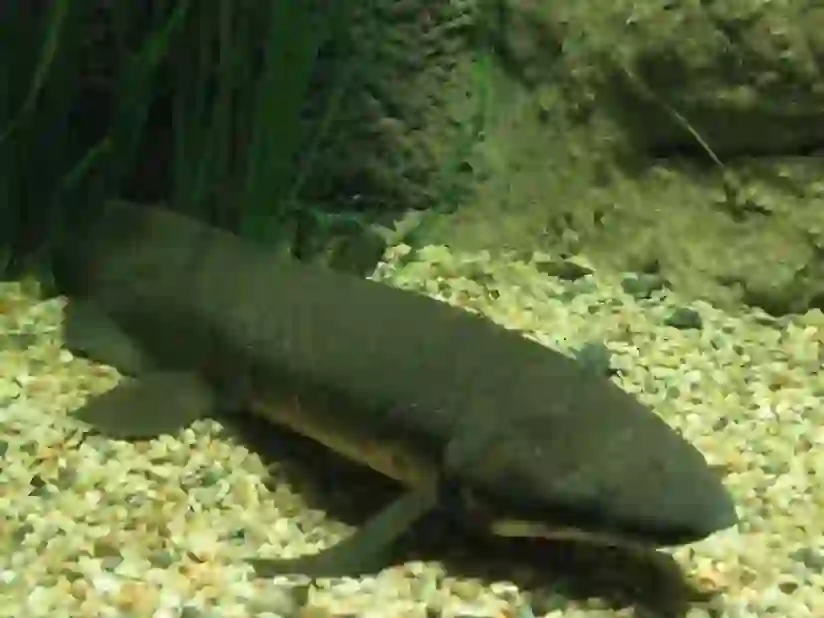
food
出典:https://commons.wikimedia.org/wiki/File:Neoceratodus_forsteri,_2014-09-19.JPG

出典:https://pixabay.com/images/id-1606313/

出典:https://unsplash.com/photos/2P1UWt76ZS8

出典:https://pixabay.com/images/id-1386340/

出典:https://pixabay.com/images/id-1606314/
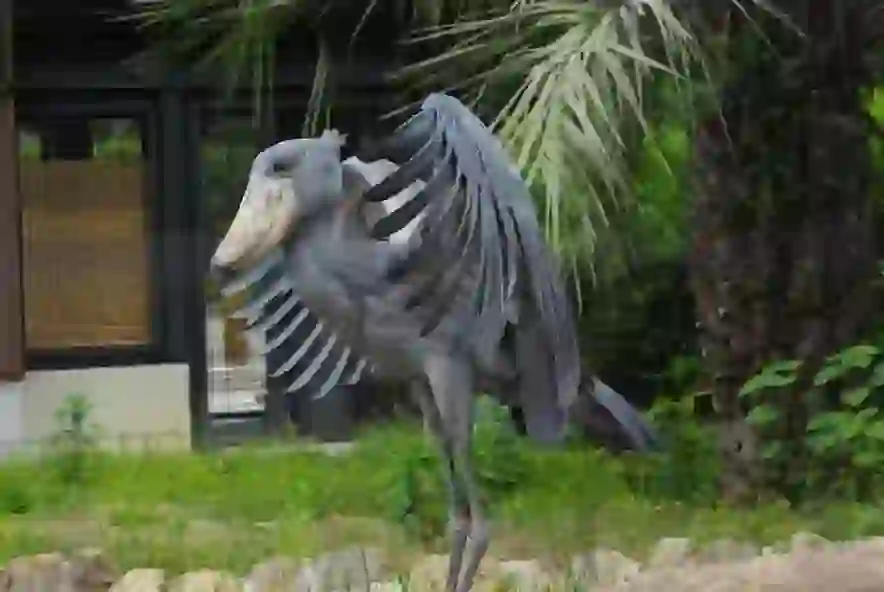
出典:https://commons.wikimedia.org/wiki/File:Noichi_zoo8_Shoebill.jpg

出典:https://pixabay.com/images/id-4943905/
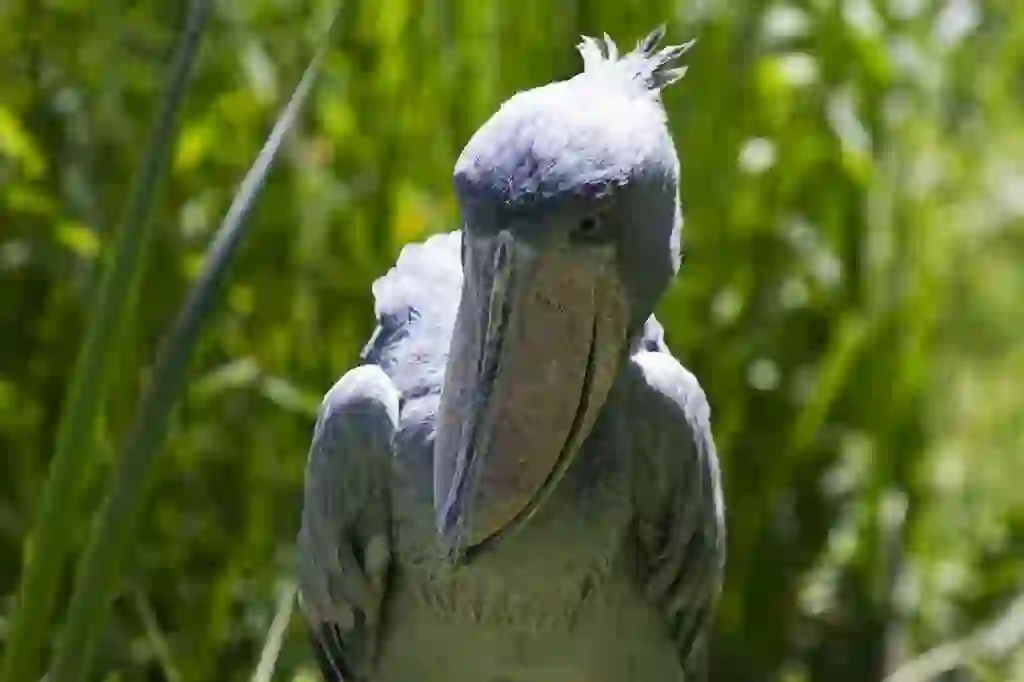
出典:https://pixabay.com/images/id-2682189/

Help Enrich Our Animalbook.jp with Your Media!
We are constantly looking to expand and enrich our Animalbook.jp with amazing photos and videos of animals. If you have any media that you'd like to share, please contribute and help us showcase the beauty and diversity of the animal kingdom. Your submissions will be credited and featured in our encyclopedia, reaching a wide audience of animal lovers.


















